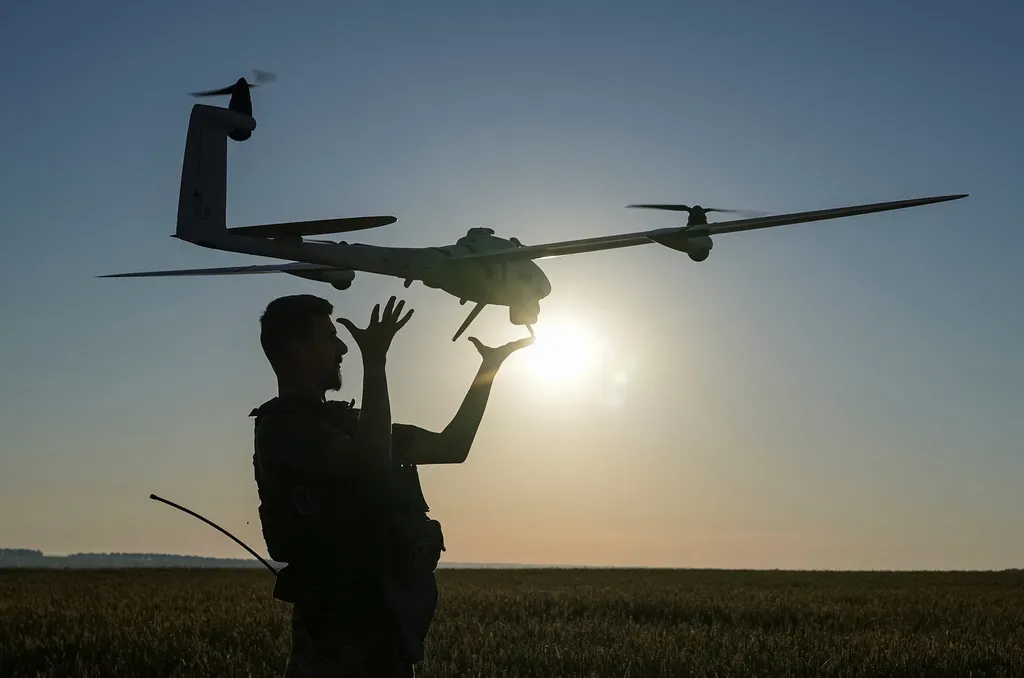Ukrainian drones have become a persistent thorn in Russia’s side, disrupting not only frontline operations but also targeting critical infrastructure deep within Russian territory. This relentless pressure has spurred Russian engineers into action, accelerating the development of counter-drone technologies. This week, Russia showcased a diverse array of systems designed to neutralise the Ukrainian drone threat, from laser turrets to upgraded Soviet-era aircraft and a new active protection system reminiscent of the Afganit.
Among the most intriguing developments is a new counter-drone system that bears a striking resemblance to the Afganit active protection system. This system, which employs radar and optical sensors to detect and destroy incoming drones, is reportedly designed to counter FPV drones and loitering munitions. However, despite claims of its effectiveness, there is currently no evidence of mass production or deployment on the front lines, suggesting it may still be in the prototype or testing phase.
In the realm of offensive capabilities, Russia has unveiled the Klin kamikaze drone, a loitering munition equipped with artificial intelligence. The Klin can autonomously detect and attack targets at ranges up to 120 km when a relay is used, or operate as an “airborne minefield,” loitering for about 80 minutes. With a takeoff weight of 13.5 kg and a flight speed ranging from 108 to 300 km/h, the Klin is a formidable addition to Russia’s drone arsenal. Notably, some components of the UAV are manufactured using 3D printing technologies, highlighting the increasing role of additive manufacturing in modern warfare.
Meanwhile, the Russian company Laboratoriya PPSH has developed a turret-mounted laser system designed to target small quadcopters and fixed-wing kamikaze drones at a distance of 1.5–2 km. The system, which is reportedly a fibre-optic laser with a power output of 5–10 kW, is equipped with a thermal imaging sighting system featuring an LCD that shows infrared images of heat-contrast targets. The laser module and optical system are protected by a shielded casing, ensuring the system’s durability in combat conditions.
At the St. Petersburg Gas Forum, Russia presented samples of domestic unmanned aerial vehicles, including the large multicopter Moskit BS1, capable of carrying a payload of 200 kg over a distance of up to 35 km. The UAV system Listopad, with a flight range of 150 km and a duration of 3 hours, is designed for monitoring industrial facilities and mapping, even under electronic warfare conditions. The Polkan M1, equipped with an automatic takeoff and landing system, can transport a 40 kg cargo over a distance of 200 km and remain airborne for up to 3 hours.
In the realm of additive manufacturing, the Russian company Azimut is conducting field tests of its new universal drone, which features a 3D-printed fuselage. The drone’s cost is reduced by using a single engine for all flight modes and additive manufacturing technologies, making it an affordable option for monitoring tasks.
On the aviation front, a modified AN-2 aircraft equipped with a turboprop engine has begun flight tests near Yeysk in Russia’s Krasnodar Krai. The aircraft, which has been adapted to use the TV2-117 engine typically found in Mi-8T helicopters, aims to outperform previous versions with its enhanced power and performance.
Lastly, the United Aircraft Corporation of state corporation Rostec has completed the construction of the first experimental prototype of the modernised Yak-130M advanced trainer/light-attack aircraft. The aircraft, which is equipped with a new onboard radar station, an optical-laser thermal-imaging system, a defensive suite, and a modern communications system, is designed to perform missions both day and night. The modernisation will enable the Yak-130M to be armed with air-to-air missiles and air-to-surface munitions using satellite and laser guidance systems, further enhancing its combat capabilities.
As the war in Ukraine continues to evolve, the rapid development and deployment of new technologies on both sides underscore the critical role of innovation in modern warfare. The race to counter and neutralise emerging threats is driving advancements in drone technology, electronic warfare, and active protection systems, shaping the future of military engagement.

